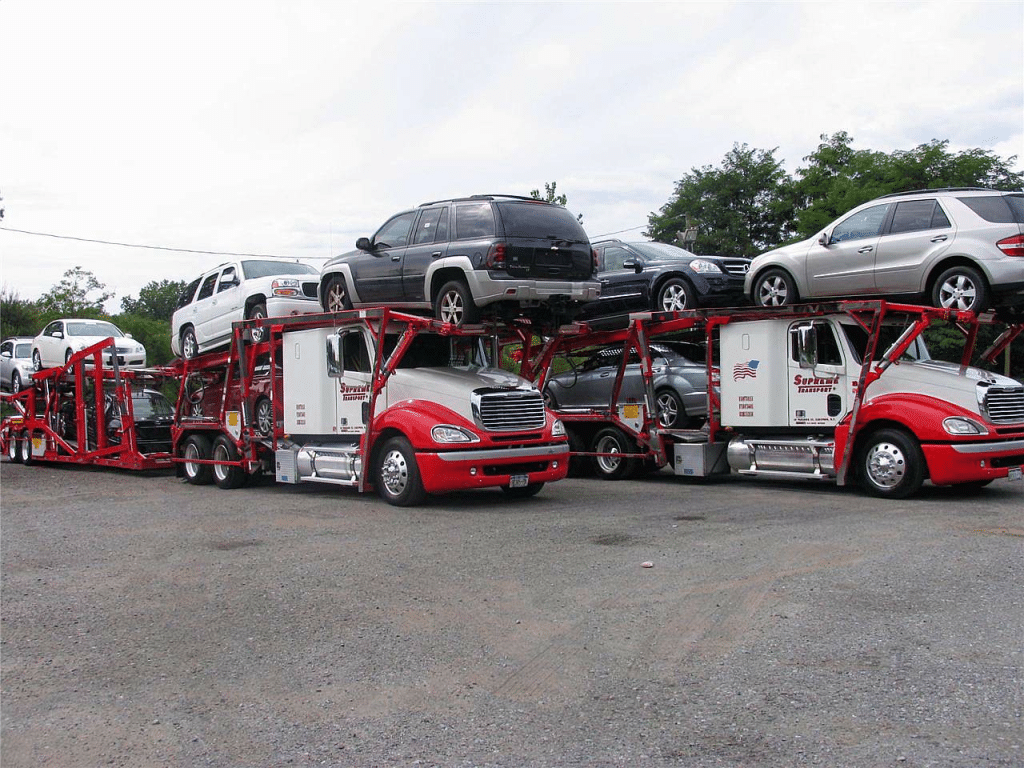Understanding Hawaii’s Ev Shipping Regulations
Shipping an electric vehicle (EV) to Hawaii involves navigating a unique set of regulations and requirements. Understanding these rules is crucial for ensuring a smooth and compliant transportation process.
First and foremost, it’s important to recognize that Hawaii has specific laws regarding the importation of vehicles, including emissions standards and safety regulations. While EVs generally meet emission standards due to their zero-emission nature, it’s vital to confirm that your vehicle adheres to all applicable federal and state safety guidelines. Ensuring your EV complies with the National Highway Traffic Safety Administration (NHTSA) regulations can prevent any unexpected delays or complications upon arrival.
Hawaii also has stringent quarantine protocols aimed at preserving its delicate ecosystem. Your EV will undergo an inspection for invasive species such as insects or plant material that might hitch a ride from the mainland. To avoid any issues, thoroughly clean your vehicle inside and out before shipping.
Another key regulation involves documentation. You must provide proof of ownership, typically in the form of the title or registration documents, as well as valid identification. Additionally, if there’s a lien on your vehicle, you’ll need written permission from the lienholder authorizing its transport out of state.
Lastly, be aware of Hawaii’s port-specific procedures. Each port may have distinct processes for handling incoming vehicles which can affect how you prepare for shipment. For example, you might need to coordinate with local agents who specialize in automotive imports to facilitate smooth clearance through customs.
Understanding these regulations not only helps in compliance but also ensures that your EV reaches Hawaii without unnecessary hitches or penalties. By preparing ahead and familiarizing yourself with these guidelines, you can make the transition seamless and stress-free.
Preparing Your Electric Vehicle For Transport
Preparing your electric vehicle (EV) for transport to Hawaii is a crucial step in ensuring its safe and efficient journey across the Pacific. This process involves several key considerations and actions that will help protect your EV from potential damage and ensure it arrives in optimal condition.
First, begin by thoroughly cleaning your vehicle, both inside and out. A clean exterior will allow you to easily inspect for any pre-existing damage before shipping. Documenting the current state of your EV with detailed photos can serve as valuable evidence should any disputes arise regarding its condition upon arrival. Pay special attention to the undercarriage, as this area is often neglected but can harbor dirt and debris that might cause issues during transport.
Next, address any mechanical issues or maintenance needs prior to shipping. Ensure that all fluid levels are topped off, including coolant and brake fluids, even though electric vehicles do not require traditional engine oil. Check tire pressure to confirm it meets manufacturer recommendations; tires should neither be over-inflated nor under-inflated as incorrect pressure can lead to complications during transit.
Battery preparation is another critical aspect unique to electric vehicles. It’s advisable to charge the battery to around 50% capacity before shipping; this helps balance between having enough power for necessary functions while avoiding full charges which can sometimes stress the battery over extended periods without use.
Deactivate any alarms or security systems that may inadvertently activate during transport causing delays or complications. Additionally, remove personal belongings from inside the vehicle as these are often not covered by insurance policies provided by shipping companies.
Lastly, coordinate with your chosen transport company regarding specific requirements or recommendations they might have for EVs. Following their guidelines closely will facilitate a smoother process overall.
By taking these preparatory steps seriously, you ensure that your electric vehicle is well-protected throughout its journey to Hawaii, arriving ready for use in its new island home.
Choosing The Right Shipping Method
When it comes to shipping your electric vehicle (EV) to Hawaii, choosing the right shipping method is crucial. Your decision will significantly impact the cost, convenience, and safety of your vehicle during transit. There are primarily two methods to consider: Roll-on/Roll-off (RoRo) and container shipping.
Roll-on/Roll-off is a popular choice due to its cost-effectiveness and simplicity. In this method, your EV is driven onto a specialized vessel designed for transporting vehicles. The car remains secured in place for the duration of its journey across the Pacific Ocean. RoRo shipping offers a straightforward process with less paperwork and fewer logistical challenges compared to other methods. However, it’s essential to note that while RoRo is generally safe, it exposes your vehicle to external elements such as saltwater air, which can be harsh on an EV’s exterior over extended periods.
On the other hand, container shipping provides an additional layer of protection by placing your EV inside a metal container before loading it onto a cargo ship. This method minimizes exposure to environmental hazards and potential damage from other vehicles or shifting cargo during transit. Container shipping often comes at a higher price but offers peace of mind knowing that your EV is better shielded from potential risks.
When deciding between these methods, consider factors like budget constraints, time sensitivity, and how much protection you desire for your vehicle. Additionally, consult with reputable shipping companies who specialize in transporting electric vehicles; their expertise can help you navigate regulations specific to Hawaii and ensure all safety protocols are adhered to throughout the journey.
Ultimately, thorough research and careful consideration will guide you towards selecting the most suitable method for shipping your EV to Hawaii—balancing cost efficiency with optimal care for your prized possession.
Selecting A Reputable Shipping Company
Selecting a reputable shipping company is a pivotal step in ensuring your electric vehicle (EV) reaches Hawaii safely and efficiently. This decision affects not only the condition of your car upon arrival but also the overall experience of the shipping process. To begin, it’s essential to conduct thorough research on potential shipping companies. Look for companies with extensive experience in transporting vehicles, particularly EVs, as they require special care due to their unique components and battery systems.
One of the primary indicators of a reputable company is its licensing and insurance status. Ensure that the company holds all necessary licenses from relevant authorities such as the Federal Maritime Commission (FMC). Additionally, verify that they offer comprehensive insurance coverage that will protect your vehicle against any damages during transit. This step provides peace of mind knowing that any unforeseen incidents will be adequately covered.
Customer reviews and testimonials are invaluable resources when assessing a company’s reliability. Platforms such as Yelp, Google Reviews, and even specialized forums for EV owners can offer insights into other customers’ experiences. Pay close attention to feedback regarding punctuality, communication, and how well the company handled any issues or damages.
Transparency in pricing is another hallmark of a reputable shipping company. Obtain detailed quotes from multiple providers and scrutinize them for hidden fees or ambiguous terms. A trustworthy company will provide a clear breakdown of costs and be willing to discuss any part of their pricing structure with you.
Finally, consider the level of customer service provided by each company. From your initial inquiry through to post-delivery follow-up, responsive and professional customer service can significantly ease the stress associated with shipping your EV over long distances.
By carefully evaluating these factors—experience with EVs, licensing and insurance status, customer reviews, transparency in pricing, and quality of customer service—you can select a reputable shipping company that ensures your electric vehicle arrives in Hawaii safely and securely.
Completing Necessary Documentation And Permits
Completing the necessary documentation and permits is a crucial step in ensuring the smooth shipment of your electric vehicle (EV) to Hawaii. Given the unique regulatory environment of both your state of origin and Hawaii, thorough preparation can preempt potential delays and complications.
Firstly, you need to gather all essential documents related to your EV. This includes the vehicle’s title or lienholder authorization if applicable, proof of insurance, and a valid photo ID. The title demonstrates ownership, while the proof of insurance ensures that any potential damages during transit are covered. Additionally, some shipping companies may require a notarized power of attorney form if someone else will be handling the shipping on your behalf.
It’s also vital to check with Hawaii’s Department of Transportation for specific regulations regarding EVs. Hawaii has stringent environmental regulations that may necessitate additional paperwork or modifications to your vehicle prior to shipment. For instance, they might require certification that your EV meets certain emissions standards or safety requirements unique to island driving conditions.
Moreover, you should contact the shipping company well in advance to understand their specific documentation requirements and deadlines. They often provide detailed guidelines on what is needed from their end, including a Bill of Lading which serves as a contract between you and the carrier outlining all terms for transporting your EV.
Don’t overlook any required permits either. Depending on where you’re shipping from, there might be local or state permits needed for transporting vehicles over certain distances or through particular jurisdictions.
In summary, completing necessary documentation and obtaining permits involves meticulous attention to detail and proactive communication with relevant authorities and service providers. By doing so, you’ll help ensure that the journey of your EV from its current home to Hawaii is as seamless as possible.
Tracking Your Ev During Transit
When it comes to shipping your electric vehicle (EV) to Hawaii, one of the most crucial aspects of the process is being able to track its journey. RAT understands the importance of peace of mind and offers a comprehensive tracking system that allows you to monitor your EV from the moment it leaves your driveway until it arrives at its new island home.
Once your EV has been picked up and loaded onto the carrier, RAT will provide you with a unique tracking number. This number is your gateway to real-time updates and detailed information about your vehicle’s status during transit. Using this tracking number, you can log into RAT’s online portal or mobile app at any time.
The online portal not only shows you where your car is geographically but also provides estimated arrival times at various checkpoints along the route. These checkpoints include major transit points such as loading docks, transfer terminals, and finally, the port in Hawaii where your vehicle will be unloaded. Each update is timestamped for accuracy so you can plan accordingly.
In addition to geographical updates, RAT also offers status notifications via email or SMS. These notifications can alert you when significant milestones are reached—such as departure from mainland ports or arrival at Hawaiian docks—giving you an added layer of assurance that everything is proceeding smoothly.
For those who prefer a more personal touch, RAT’s customer service team is always available to answer questions or provide further details about your shipment’s progress. They can offer insights into any potential delays due to weather conditions or logistical issues and suggest ways to mitigate any impact on delivery times.
By providing multiple avenues for tracking and communication, RAT ensures that shipping your EV to Hawaii is as transparent and stress-free as possible.
Receiving And Inspecting Your Ev In Hawaii
Once your electric vehicle (EV) has successfully made the journey across the Pacific and arrived in Hawaii, the process of receiving and inspecting it becomes paramount. This crucial step ensures that your car is in the same condition as when you handed it over for shipping, safeguarding your investment and peace of mind.
Upon arrival at the designated port in Hawaii, you’ll be notified by RAT’s team to arrange a convenient time for you to pick up your EV. It’s recommended to bring all necessary documentation with you, including identification, shipping contract, and any specific documents provided by RAT.
When you first lay eyes on your EV post-journey, conduct a thorough visual inspection. Start with the exterior: look for any scratches, dents, or other imperfections that could have occurred during transit. Make sure to check undercarriage areas that might not be immediately visible but are equally susceptible to damage.
Next, move on to inspecting the interior. Ensure that all personal items left inside are intact and that there’s no sign of tampering or unexpected wear. Pay close attention to electronic components such as dashboard displays and infotainment systems; these should function seamlessly just as they did before shipping.
After a visual inspection, it’s prudent to take your EV for a short test drive around the port area if permissible. During this drive, listen for any unusual sounds from the engine or bodywork that weren’t present before shipment. Verify operational aspects like braking performance and steering responsiveness.
Should you discover any issues or discrepancies during this inspection process, immediately document them with photos and detailed notes. Report these findings directly to RAT’s customer service team who will assist in resolving any claims or concerns promptly.
By meticulously checking every aspect of your EV upon its arrival in Hawaii, you’ll ensure its condition meets expectations while also setting yourself up for smooth sailing on island roads ahead.









